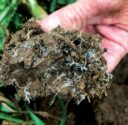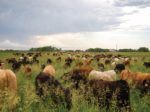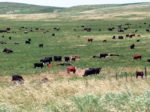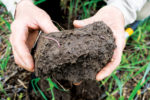Advertise Follow Us
Articles by Angela Lovell
Lessons from the Field: How Growers Profit from Regenerative Soils
Increasing plant diversity, adding livestock and following a simple soil-testing program can significantly add to the bottom line, growers say.
Read More
Crunching Data on Regenerative Farm and Ranch Management
Intercropping, adaptive grazing systems can improve crop synergies, soil health benchmarks and overall ranch profitability, experts say.
Read More
Soil Microbes Have Power to Reverse Climate Change
Many problems identified with the planet’s climate could be solved by putting water back in the ground where it belongs, says Christine Jones.
Read More
Putting Quorum Sensing to Work in Your No-Tilled Soils
No-tillers must embrace diversity in plants and soil microbes to unlock the power of quorum sensing, improve ag production and deal with climate change, says Christine Jones.
Read More
In Depth: The Money-Making Power of Soil Microbes
Reducing soil disturbance, increasing plant diversity and adding livestock to farms accelerates soil health and productivity, helping growers stay profitable, soil experts say.
Read More
No-Tillers Getting a Yield, Soil Health Boost from Intercropping
These Canadians growers tossed aside cold-weather, growing-season excuses and are interseeding diverse crops and covers to boost revenue and reduce financial risk.
Read More
Tips for Managing Cover Crop Mixes for More No-Till Benefits
Choosing a cover crop cocktail is only a start, says Adam Daugherty, as managing carbon-to-nitrogen ratios and adapting planting strategies play a big role in success.
Read More
Getting Out of the Rut with No-Tilling, Cover Crop Interseeding, Weed Suppression
Tom Cotter is boosting the value of his soils in the heart of the Corn Belt by putting the iron away and keeping his fields covered and active year round.
Read More
Make Covers a Forage Option for Better No-Till Profitability
Many cover crops are efficient, effective feed sources for livestock if they’re seeded properly and managed for optimum animal and soil health.
Read More














